
François d'Aguilon was a Jesuit, mathematician, physicist, and architect from the Spanish Netherlands.
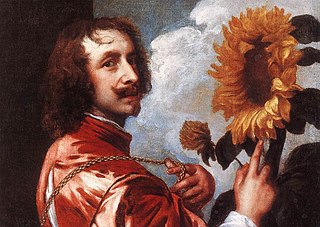
Sir Anthony van Dyck was a Flemish Baroque artist who became the leading court painter in England after success in the Spanish Netherlands and Italy.

Philip Fruytiers (1610–1666) was a Flemish Baroque painter and engraver. Until the 1960s, he was especially known for his miniature portraits in watercolor and gouache. Since then, several large canvases signed with the monogram PHF have been ascribed to him. These new findings have led to a renewed appreciation for his contribution to the Antwerp Baroque.
Theodorus Moretus, also known as Theodor or Theodore Moretus (1602–1667) was a Flemish Jesuit priest who was also a mathematician, geometer, theologian and philosopher. He spent most of his working life in Prague and Breslau where he taught philosophy, theology and mathematics. He published a number of treatises on these three subjects and also on physics and music theory.
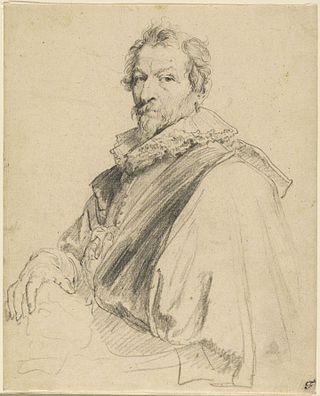
Hendrick van Balen or Hendrick van Balen I was a Flemish Baroque painter and stained glass designer. Hendrick van Balen specialised in small cabinet pictures often painted on a copper support. His favourite themes were mythological and allegorical scenes and, to a lesser extent, religious subjects. The artist played an important role in the renewal of Flemish painting in the early 17th century and was one of the teachers of Anthony van Dyck.

Cornelis de Wael was a Flemish painter, engraver and merchant who was primarily active in Genoa in Italy. He is known for his genre paintings, battle scenes, history paintings and still lifes. Through his art work, support for Flemish painters working in Italy and role as an art dealer, he played an important role in the artistic exchange between Italy and Flanders in the first half of the 17th century. His work also had an influence on local painters such as Alessandro Magnasco, particularly through his scenes of despair and irony.

Flemish Baroque painting was a style of painting in the Southern Netherlands during Spanish control in the 16th and 17th centuries. The period roughly begins when the Dutch Republic was split from the Habsburg Spain regions to the south with the Spanish recapturing of Antwerp in 1585 and goes until about 1700, when Spanish Habsburg authority ended with the death of King Charles II. Antwerp, home to the prominent artists Peter Paul Rubens, Anthony van Dyck, and Jacob Jordaens, was the artistic nexus, while other notable cities include Brussels and Ghent.
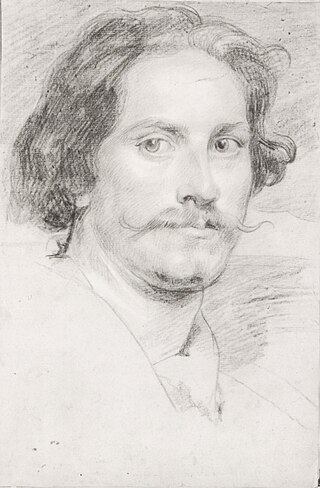
Jan Boeckhorst or Johann Bockhorst was a German-born Flemish Baroque painter and draughtsman who worked most of his career in Antwerp. He was a versatile artist who produced history paintings, genre scenes and portraits in a style influenced by the trio of leading Antwerp painters Peter Paul Rubens, Anthony van Dyck and Jacob Jordaens. Boeckhorst also worked as a designer of cartoons for tapestries.
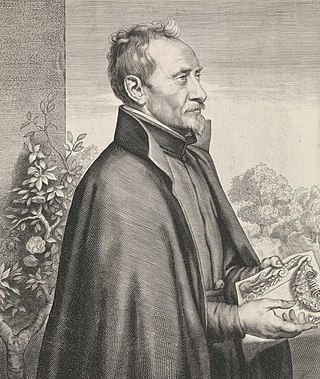
Daniël Seghers or Daniel Seghers was a Flemish Jesuit brother and painter who specialized in flower still lifes. He is particularly well known for his contributions to the genre of flower garland painting. His paintings were collected enthusiastically by aristocratic patrons and he had numerous followers and imitators.
Christoforo Borri, also called Christopher Borrus in older English sources, was a Jesuit missionary in Vietnam, a mathematician, and an astronomer.
Jean-Charles and Jean-Carles is a French masculine given name. Notable people with the name include:
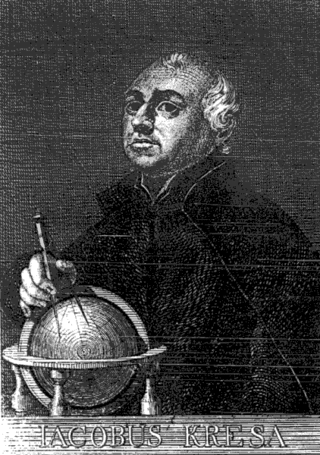
Jakub Kresa was a Czech mathematician. He was one of the most important Czech mathematicians of the Baroque era.

Karel van Mallery (1571–1635?) was a Flemish engraver who mainly worked on religious subjects and portraits and was also a reproductive engraver. He worked in Antwerp and Paris.

Alexander Voet the Elder or Alexander Voet I was a Flemish engraver, print artist and publisher. He was one of the leading engravers and publishers in Antwerp in the middle and second half of the 17th century. He operated a large workshop in which sixty to seventy collaborators took care of the entire process of printmaking, printing and publishing.

Rodrigo de Arriaga was a Spanish philosopher, theologian and Jesuit. He is known as one of the foremost Spanish Jesuits of his day and as a leading representative of post-Suárezian baroque Jesuit nominalism. Accordig to Richard Popkin, Arriaga was “the last of the great Spanish Scholastics”.

Daniel van den Dyck, known in Italy as Daniel Vandich was a Flemish painter, printmaker, architect and engineer. After training in Antwerp he left for Italy where he first worked in Venice and later became a court painter in Mantua. He was a versatile artist who created mythological and religious scenes, as well as portraits and flower-pieces.
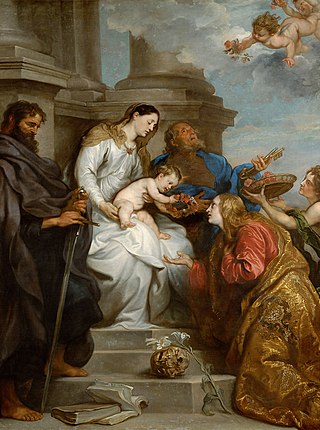
The Coronation of Saint Rosalia or Madonna and Child with Saints Rosalia, Peter and Paul is an oil on canvas painting made by Anthony van Dyck in 1629.
Philippus Nutius or Nuyts (1597—1661) was a 17th-century Flemish Jesuit.
















